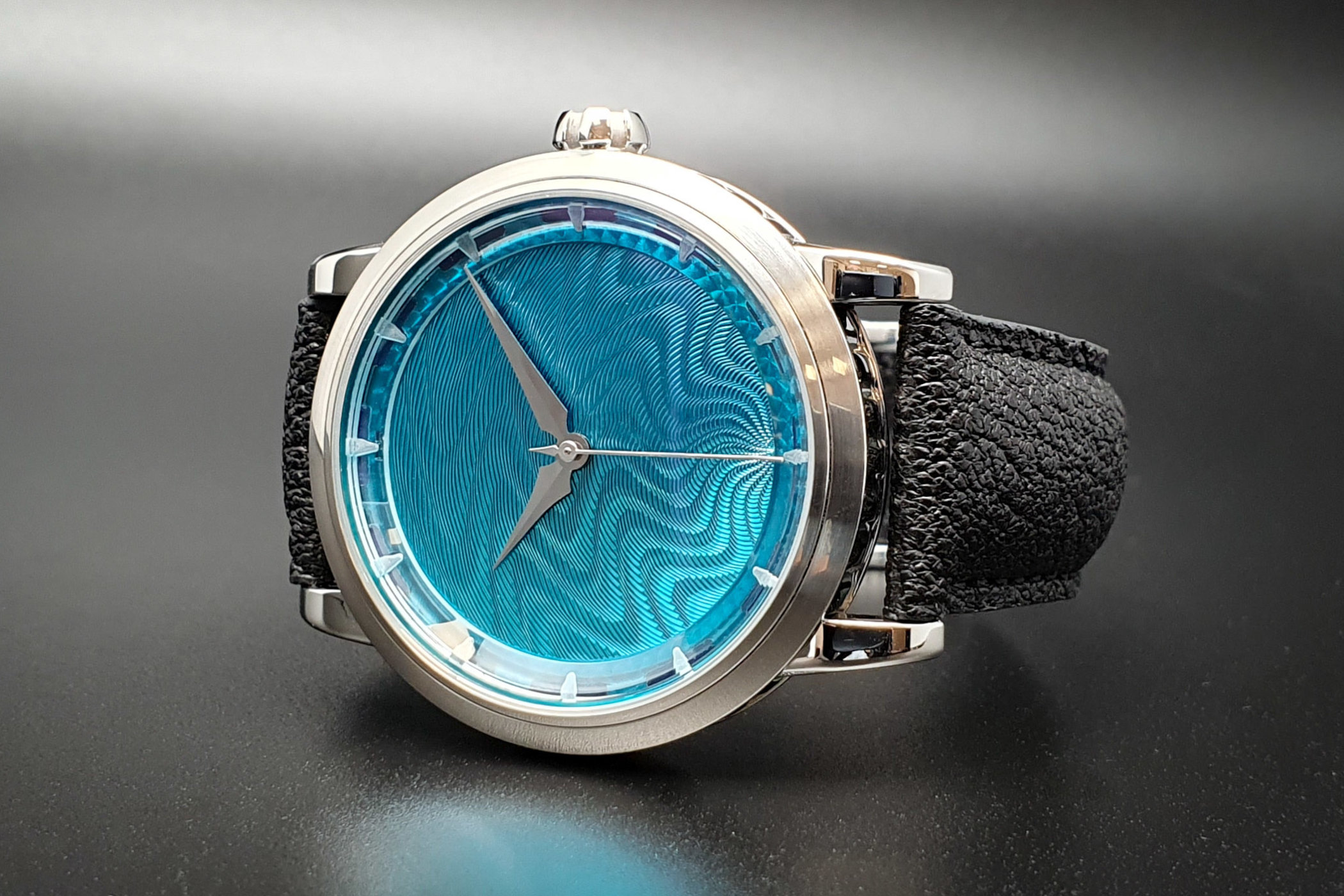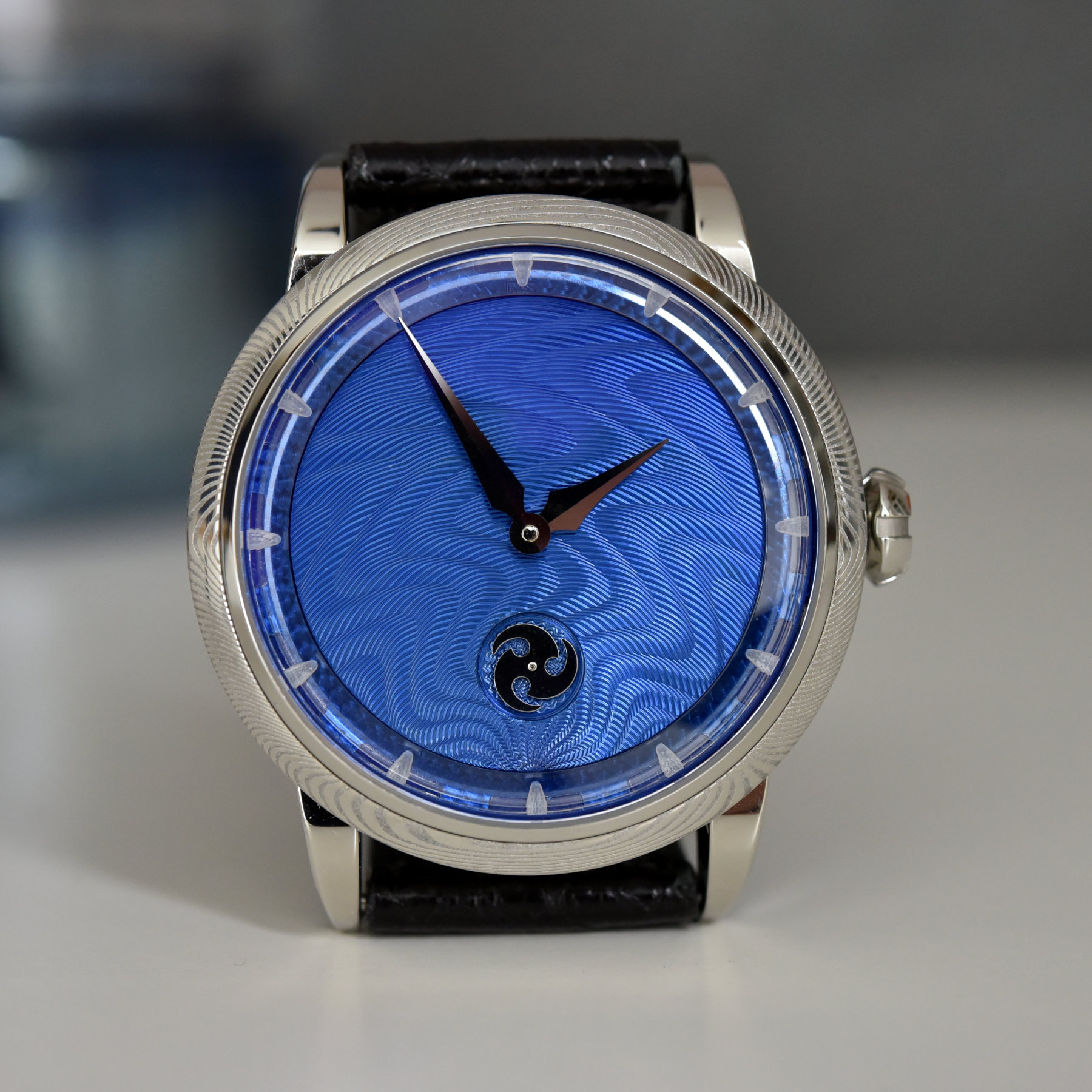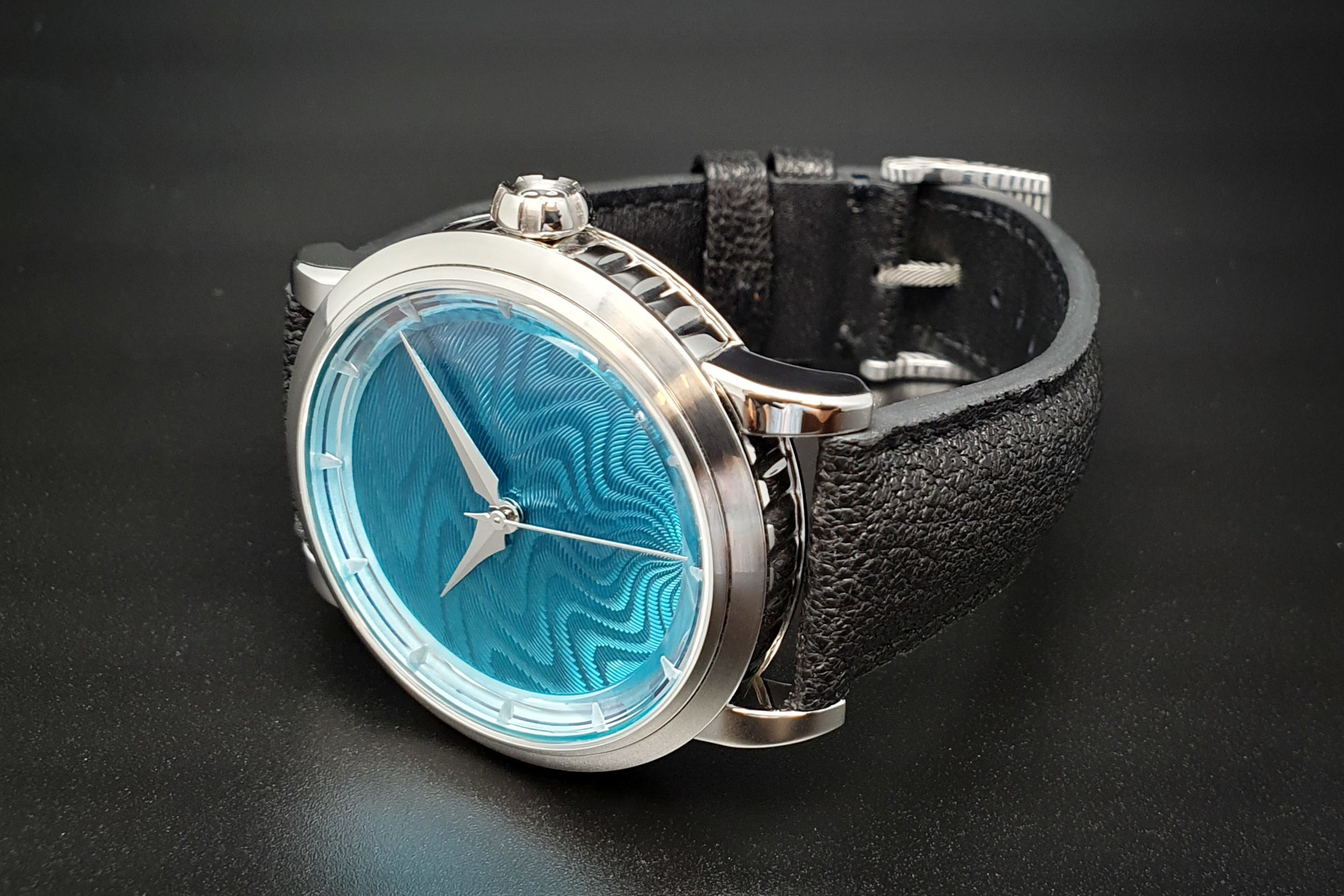The Highly Radiant GoS Sarek Rissa
What started out as a unique piece, is now made into a highly-limited run of 10 pieces.

We all have personal favourites in this business, and it would be a very boring place if we all liked or disliked the same things. The Swedish independent brand GoS is such a brand for me, as I am a big fan of the intricate details of the Damascus steel the brand is known for. In recent years, GoS has diversified a little, as it now also creates watches without this unique hand-forged material. Heavily relying on Scandinavian heritage and folklore, these non-Damascus watches still involve countless hours of craftsmanship to complete, such as guilloché dials or hand-engraved case components. The latest to emerge from the northern parts of Europe is the GoS Sarek Rissa, taking the colour from the Norrsken Rissa and putting it in the 2nd generation Sarek case.
A request from a client who wanted this type of dial in a slightly thinner case than the Norrsken (see below, left), is what ultimately led to the Sarek Rissa you see here. The case used for the Sarek Rissa is similar to the Sarek Trollius (see below, right), minus the detailed scrollwork on the bezel and the gold pins in the scallops of the side of the case. It’s finished with a combination of brushed and polished surfaces, highlighting the many facets of the case.
In terms of proportions, we’re dealing with a 41.5mm wide and 11mm tall stainless steel case, compared to 12.1mm for the Norrsken. On top, there is a sapphire crystal, with another sapphire crystal in the back. The handcrafted crown is shaped like the hilt of a Viking sword. Unexpectedly perhaps, this new Sarek Rissa features no Dasmascus steel components, but they can be incorporated upon request (and for a premium).
The beauty in most of GoS’ watches lies in the intricate details of the Damascus steel cases and dials, or the wavey guilloché patterns inspired by the Aurora Borealis, or Northern Lights. The Sarek Rissa falls under the latter category, and even though it lacks the intricate patterns of the unique forged metal GoS is known for, it’s still remarkably detailed. Each dial is hand-turned by Jochen Benzinger, one of the absolute best guilloché craftsmen in the business.
Once finished, each dial gets some additional machining and finishing before a nano-ceramic colour is applied. This is a very delicate and intensive process, so each one is made individually from start to finish. The hand-blown Swedish crystal chapter ring gets a coat of enamel paint on the underside. Time is indicated by traditional spearhead-shaped hour and minute hands, and a slender needle-like seconds hand, as we’ve grown accustomed to with watches coming from GoS.
We see more and more brands embrace the 100-series movements by La Joux-Perret, which is a welcome development. GoS introduced the G101 automatic movement with the 2023 edition of the Sarek Trollius. This calibre runs at a rate of 28,800vph and delivers a generous 65 hours of running time. The rotor is specially crafted out of Tungsten and is finished with a gold Triskele (triple drinking horn) medallion. The movement can be admired through the sapphire crystal caseback.
Keeping things in line with the Scandinavian heritage of GoS and this new Sarek Rissa, the watch comes on a soft Moose leather strap fitted with a Damascus steel pin buckle. It is limited to just 5 or 6 pieces per year, following the unique piece that started it all for this one. The Sarek Rissa has a price of USD 12,500 before taxes. As mentioned, bespoke options, including damascus elements are possible but come at a premium.
For more information, please visit GoSWatches.com













2 responses
wish it had LUME !!!!
It is a beautiful thing, though not really my kind of thing. I do find the price a bit salty though – after all, the La Joux-Perret 101 is basically a gussied-up Miyota 9000 series. A nice movement, yes, but not for that kind of money.